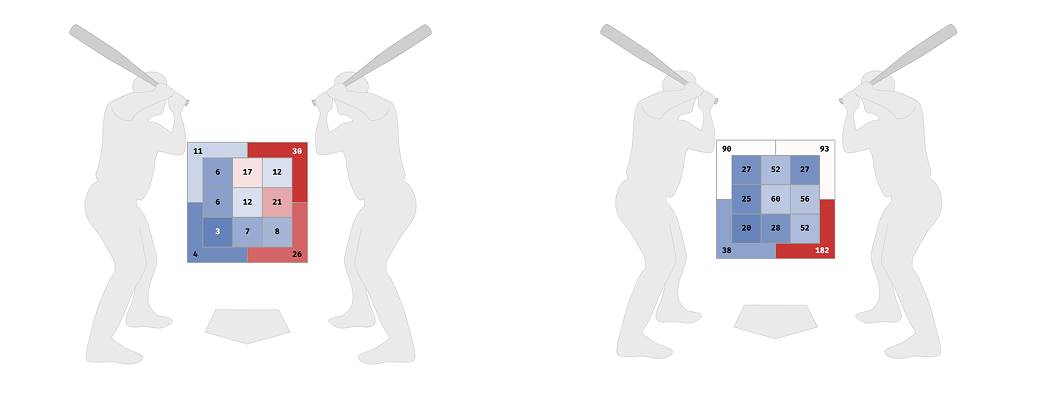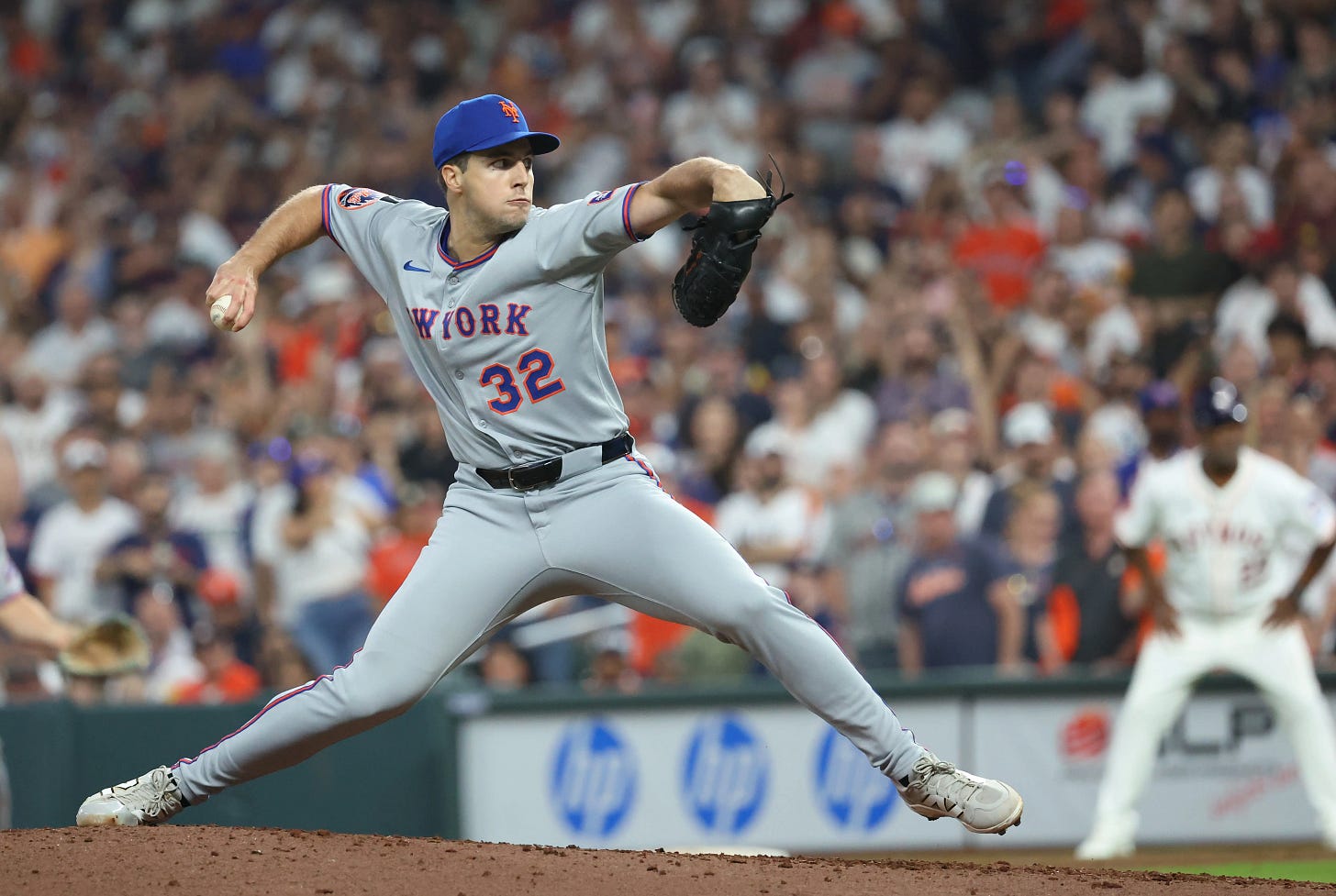
“The Mets don’t have any pitching!”
That was a common refrain you’d hear from both foes and fans alike heading into the 2025 MLB season. After a winter that was notably free of flashy moves in the free agent starting pitcher market, the Mets front office was chided for assembling a group of arms that was essentially likened to a dusty pile of parts on the floor of a Driveline facility.
Well, here’s where things stand today, April 20th:
The Mets currently rank:
1st in team ERA (2.27)
1st in runs allowed (57)
4th in strikeouts (200)
5th in BAA (.213)
6th in WHIP (1.15)
New acquisitions Clay Holmes and Griffin Canning have been fantastic to start their Mets tenures, David Peterson appears to be building on the growth he displayed last year, Kodai Senga looks like he’s back to full strength, and the bullpen continues to defy expectations every game.
And yet, while the entire staff seems stout, there’s one specific name I feel more compelled to discuss than any other…I’ll give you a guess who that might be.
Max Kranick looks like the steal of the winter.

Heading into this season, the name ‘Max Kranick’ is one I’d imagine many fans were unfamiliar with — I certainly was. Upon his signing, I did some research…and I’ll admit, I remained a bit skeptical. I really wasn’t expecting much from who appeared to be the flyer signing of all flyer signings.
Thankfully, the childhood Mets fan is pitching very well for his favorite team in his return to big league baseball. He started his season by logging his first MLB strikeout since 2022, and he hasn’t looked back.
Through 13.1 innings of work, Kranick has looked borderline unhittable. Batters are slashing just .133/.133/.222 against him this season, and the numbers only get better:
1.35 ERA (2.79 xERA)
2.66 FIP (3.31 xFIP)
0.45 WHIP
.143 BABIP
6 H
2 R (2 ER)
1 2B
1 HR
9 K
0 BB
Heading into Opening Day, Kranick hadn’t thrown a major league pitch in over two years…so, the question has to be asked:
How is he doing this?
Control, control, control.

Kranick has been demonstrating a more elevated awareness and management of the strike zone than he’s shown in years prior. Though his delivery has always leaned towards his glove-side, he previously demonstrated difficulty consistently placing pitches evenly around (and in) the zone.
This year, that consistency seems to have suddenly developed. While not a famously strikeout-heavy pitcher, Kranick’s nine strikeouts so far have fallen directly in line with the distribution map above:
Where 2021-22 found Kranick just trying to regularly throw strikes, he’s been utterly locked in on the first-base side of the plate this year.
His two strikeouts from his April 18th outing against the Cardinals are a perfect illustration of this trend. Let’s start with the buzzsaw he threw on the edge of the plate to Cardinals shortstop Thomas Saggese:
Kranick’s fastball has been working superbly this season, generating a swing-and-miss nearly 33% of the time it’s been thrown. Once a problem pitch, he has significantly enhanced his four-seamer’s effectiveness, deploying it less frequently, more evenly, and in smarter spots to minimize damage:
Compared to his 2021-22 output, Kranick has improved the spin rate of his fastball considerably. This has resulted in an uptick in horizontal movement, which has led to the ball being hit far less frequently, and only relatively weakly when contact is actually made. The increase in motion has also led to a whopping 32.5% whiff rate the year, a vast leap from the 20% the pitch saw in 2021 and the paltry 7% mark it posted in 2022.
After icing Saggese, Kranick sat down St. Louis center fielder Michael Siani in the following inning with a very subtle slider that gently dipped its way into the zone for a called third strike:
So far this season, while most of Kranick’s strikeouts have come from his fastball, it’s his breaking pitches that have held more value:
While his slider hasn’t been a traditional put-away pitch this season the way it is for a large chunk of the league, it’s been a tremendous out generator, accounting for nearly 40% of his recorded outs.
Kranick’s curveball also plays well off of his fastball-slider combo. This is the main offspeed pitch in his arsenal that attacks the third-base side of the plate, and it lives exclusively down in the zone, so it’s an excellent dirt-chase and ground-ball weapon for hitters on either side of the plate — see its average -15° launch angle.
Wrapping Up
So, how is Max Kranick doing this? It all starts with command.

He’s no longer spraying pitches and hoping for weak contact, he’s attacking hitters with purpose and precision. He’s also sequencing more effectively, and it’s resulting in an outright elimination of walks alongside the best strikeout rate of his young career.
In short, for the first time as a big leaguer, Max Kranick is in control.

Kranick’s is the ultimate comeback story. From having a perfect debut derailed by rain to missing two full seasons on the way back from Tommy John surgery, the Archbald, PA native so far looks like he’s every bit of the pitcher the Mets thought he could be. What makes it even sweeter is that he’s doing it for the team he grew up rooting for.
There’s still plenty of baseball left to be played, and he has plenty more tests ahead of him, but there’s no question that Kranick belongs on a Major League staff. For a roster that’s been reliant on depth and defying expectations, his emergence is more than just a feel-good story. It’s pivotal.








